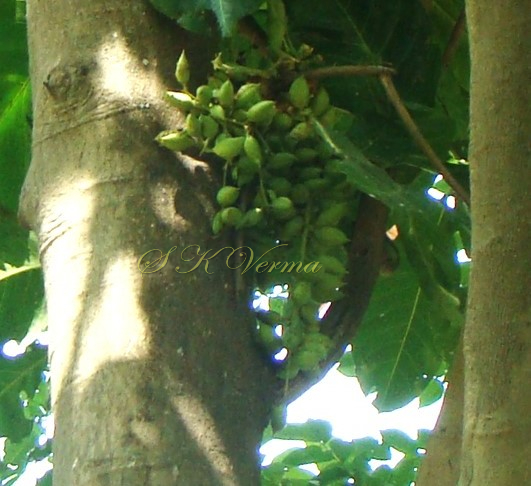SCHLEICHERA
Schleichera
Willd., Sp. Pl. ed.4: 1096. 1805; Hook. f., Fl. Brit. India 1: 681. 1875.
Trees. Leaves alternate, exstipulate, pinnate; leaflets opposite or alternate, entire, repand wavy or slightly serrate, with subparallel lateral veins and delicate inconspicuous reticulations. Inflorescence panicles or racemes simple, elongated. Flowers small, fascicled, regular, polygamo-dioecious (having bisexual and male flowers on some plants, and bisexual and female flowers on others). Calyx 4-6-fid, small, cupulate; lobes valvate or obscurely imbricated. Petals absent. Disc complete, glabrous, wavy. Stamens 5-8, exserted, inserted within disc; filaments more or less pubescent; anthers small, glabrous. Ovary ovoid, 3-4-locular, 1 ovule per loculus, erect, ovary narrowed into a rigid style; stigma 3-4-cleft. Fruit dry, crustaceo- coriaceous, indehiscent, 1-3-celled. Seeds erect, enveloped in a fleshy aril.
One species
Schleichera oleosa
Schleichera oleosa
(Lour.) Merr., Interpr. Rumps. Herb. Amboin. 337. 1917; P. C. Pant in N. P. Singh et al., Fl. India 5: 384. 2000; keralaplants.in; S. oleosa (Lour.) Oken, Allg. Naturgesch 3: 1341. 1841; S. trijuga Willd., Sp. Pl. ed.4: 1096. 1805; Hook. f., Fl. Brit. India 1: 681. 1875; Gamble, Fl. Pres. Madras 248(177). 1915; Parker, For. Fl. Punj. ed. 1: 106. 1918 (Reprint 1973).
A large deciduous tree. Bole usually crooked and slightly buttressed. Bark smooth, grey; young trunks grey, rough and longitudinally fissured. Branches terete, with sparse, short sericeous hairs when young. Leaves alternate, paripinnate, (2-) 3 (-4)- jugate, sometimes imparipinnate with terminal odd leaflet; petiole terete to somewhat flattened or slightly grooved adaxially, 2-6 (-10) cm long, pulvinate; rachis 5.5-15 cm long, terete to triangular; petiolule very short, 1-3 mm long, slightly grooved above, swollen, jointed to rachis; leaflets elliptic, obovate to ovate, opposite or subopposite, leaflets of lowest pair smallest, 5-11 cm x 2.5-7 cm, terminal pair the largest, 10-26 cm x 4-14 cm, chartaceous to coriaceous, base subacute to cuneate, often oblique, margin entire to repand, apex obtuse, emarginate, sometimes shortly acuminate, greyish-green above, light-greenish below, deep purple when young; veins in 10-15 pairs, looped near margin; in imparipinnate leaves rachis continues into a soft appendage beyond terminal leaflets; petiole, petiolule, rachis and abaxial midrib shortly pubescent. Inflorescence 6-15 cm long, situated in the defoliated parts of branchlets above leaf-scars, sometimes axillary, consisting of a few simple (female) or sparsely branched (male) thyrses, the basal part with many-flowered fascicles, the upper part spicate, sparsely hairy. Flowers small, 5-6 mm across, functionally unisexual, pale yellow or pale green; pedicels up to 5 mm long. Sepals 4-6, connate at base, lobes ovate to deltoid, ca. 2 mm long, obtuse to acute, puberulent on both sides, margin ciliate, sometimes glandular, deciduous in fruit. Petals absent. Disc annular, margin crenulate, larger in male flowers. Stamens 5-9, inserted inside the disc; filaments ca. 3-3.5 mm long in male flowers, sparsely hairy, much reduced in female/ bisexual flowers; anthers oblong; pistillode small in male flowers.
Ovary ovoid, 3-4 loculed, 1 ovule per loculus, slightly 3-angular and indistinctly 3-sulcate, ca. 1.3 mm long; style rather thick, up to 1.5 mm long; stigma 3-4 lobed. (Female flowers not observed)
Fruit dry, indehiscent, 1.5-2.5 cm x 1-2 cm, ovoid, base narrowed, apex pointed, beaked, 1-2 seeded, yellow, hard crustaceous, smooth or slightly spiny.
Common Names: Ceylon Oak, Lac Tree, Gum Lac Tree; Kussum (Hindi)
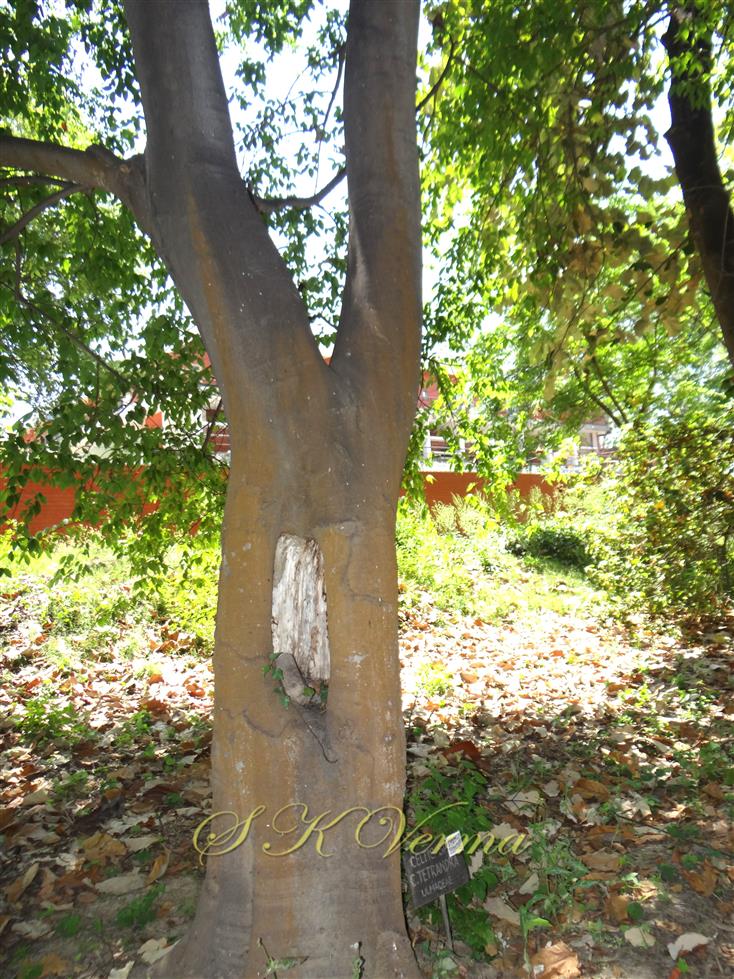
-DSC01417.jpg)
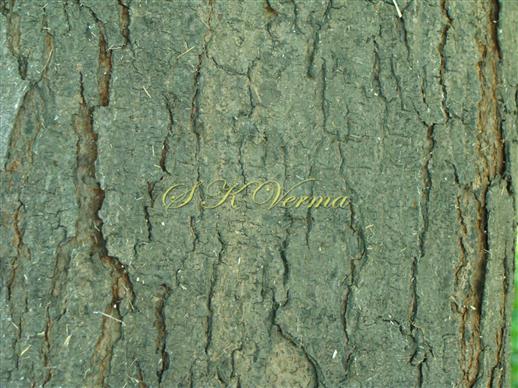
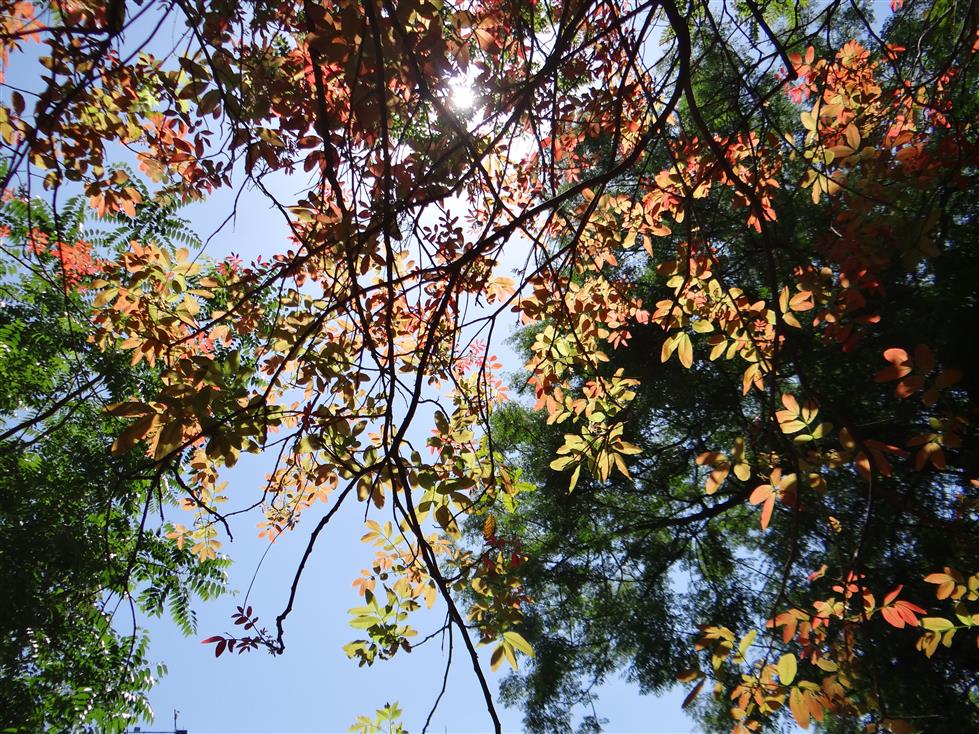
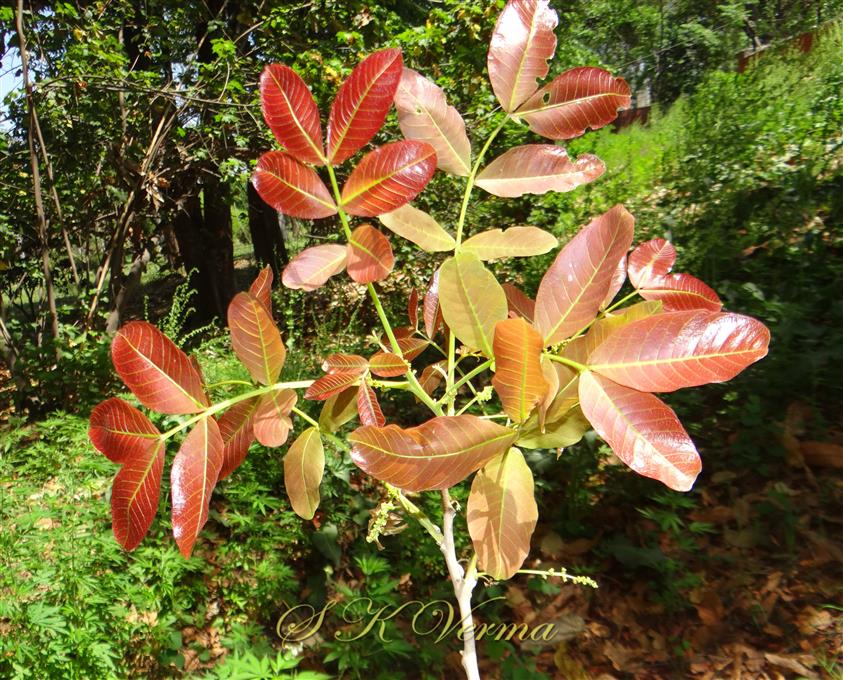
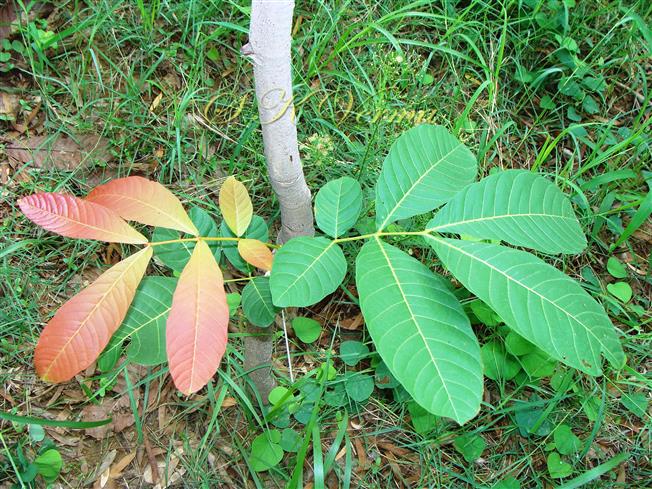
 with terminal odd leaflet-0763.jpg)
-DSC05958.jpg)
-DSC05949.jpg)
-DSC05945.jpg)
-DSC05953.jpg)
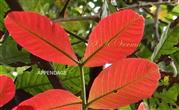
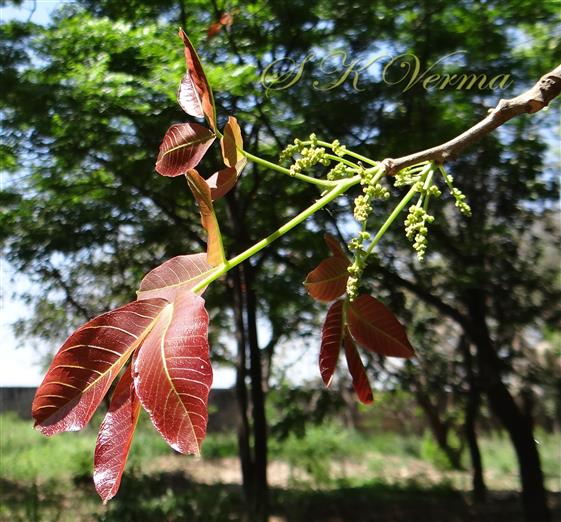
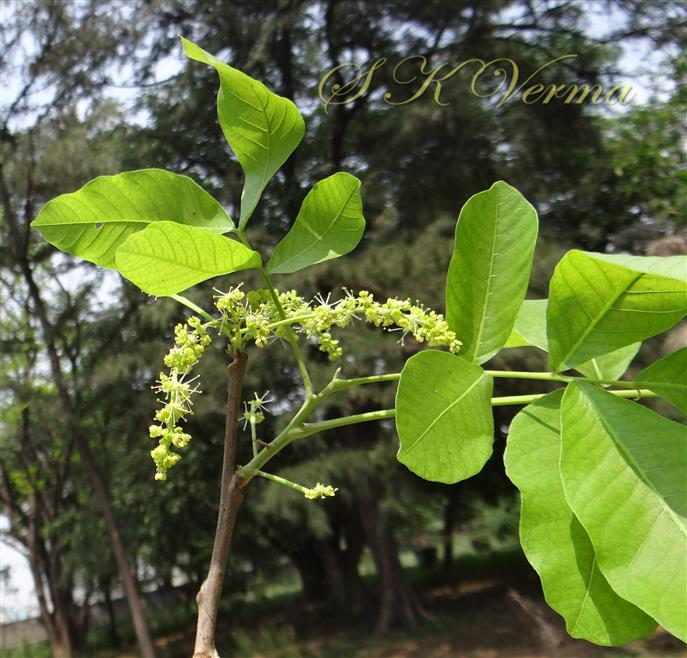
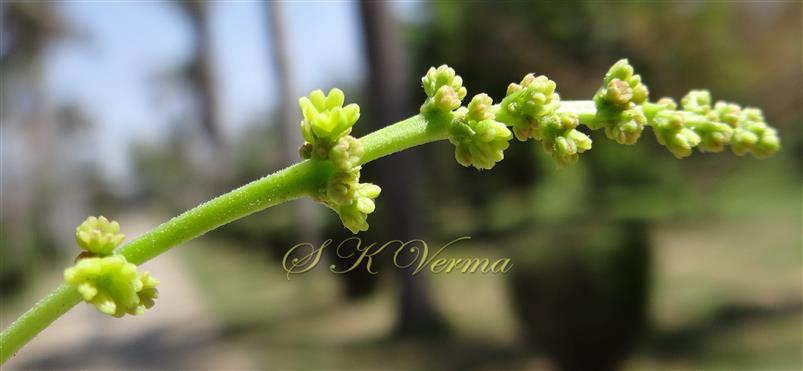
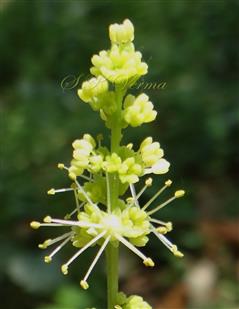
.jpg)
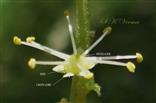
-DSC01753.jpg)
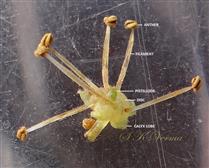



-DSC01417.jpg)




 with terminal odd leaflet-0763.jpg)
-DSC05958.jpg)
-DSC05949.jpg)
-DSC05945.jpg)
-DSC05953.jpg)





.jpg)

-DSC01753.jpg)

